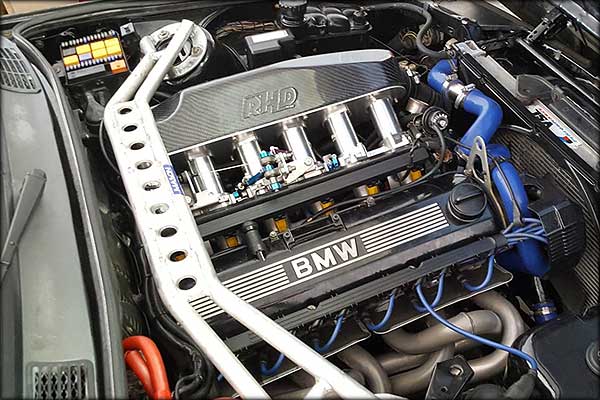Discovering the Advancement of Burning Engines in Modern Transport Equipments
As we browse the landscape of modern-day transport, the advancement of burning engines stands as a testimony to human resourcefulness and design prowess. From their simple beginnings to the sophisticated powerhouses moving cars today, combustion engines have undertaken a remarkable trip of technology and adjustment. Comprehending the ins and outs of this development not only clarifies the past but additionally leads the method for visualizing what lies in advance in the world of transportation technology. The interaction of background, innovation, and environmental concerns fit the trajectory of burning engines produces a narrative that is both engaging and insightful.
Early Beginnings of Combustion Engines
How did the idea of burning engines first emerge in the very early stages of transportation growth? The origins of combustion engines can be mapped back to the 17th century when the concepts of internal combustion were initial explored.
The advancement minute featured the innovation of the very first effective gasoline-powered engine by Karl Benz in 1885 - bmw engine. This engine paved the method for the advancement of the modern-day automobile, reinventing transport systems worldwide. Succeeding developments by Nikolaus Otto and Gottlieb Daimler additionally improved burning engine innovation, leading to the automation of vehicles and the fast expansion of the transport market
These very early burning engines were identified by their simpleness and effectiveness, laying the structure for the complicated and powerful engines utilized in contemporary transportation systems. The evolution of combustion engines has actually contributed fit the means we take a trip and deliver products, marking a considerable milestone in the history of transport growth.
Change to Internal Combustion Technology
The change to inner combustion technology noted a crucial shift in the evolution of transport systems. This change began in the late 19th century, with inventors like Nikolaus Otto and Gottlieb Daimler creating the very first successful inner burning engines. These engines transformed transportation by supplying a much more efficient and effective choice to heavy steam engines and electric motors.
Among the essential benefits of interior combustion engines was their capability to be scaled down to suit cars, leading to the growth of motorbikes and automobiles. This change from bulky, fixed engines to compact, mobile ones led the way for the modern-day transportation systems we see today.
The change to interior burning technology additionally spurred innovations in fuel modern technology, resulting in the growth of gasoline and diesel as main gas sources for automobiles. This shift not only made transport much more obtainable to the masses but likewise laid the structure for the oil and gas industry to end up being integral to worldwide economic situations.
Impact of Combustion Engines on Transport
The adoption of combustion engines in transport systems militarized a profound shift in the effectiveness and rate of global wheelchair. Burning engines revolutionized transportation by supplying a flexible and trusted source of power for numerous vehicles, including cars and trucks, ships, planes, and vehicles. This innovation considerably improved the capability for items and individuals to conform fars away in much shorter amount of time, leading to increased connectivity between areas and countries.
Furthermore, the widespread use burning engines has actually had a substantial effect on financial growth. The capability to deliver items effectively has actually spurred trade and commerce, allowing organizations to increase their markets and get to customers worldwide. This has helped with economic development and globalization, as items can now be carried faster and in larger quantities than ever.
Nevertheless, the environmental effect of burning engines can not be ignored. The combustion of nonrenewable fuel sources has actually caused air pollution and greenhouse gas emissions, adding to environment modification and positioning health threats to populaces. bmw engine. Because of this, there is an expanding focus on developing different propulsion modern technologies to alleviate these negative results and produce a more lasting future for transportation
Innovations in Burning Engine Design
Countless improvements in combustion engine layout have propelled the development of transportation systems over the years. One noteworthy technology is the advancement of turbocharged engines, which use exhaust gases to drive a wind turbine that compresses incoming air, enabling more gas to be charred, causing enhanced power result without a considerable rise in engine size. Furthermore, direct injection modern technology has enhanced gas effectiveness and efficiency by precisely managing the quantity and timing of fuel injected right into the combustion chamber. Variable valve timing systems have actually also transformed engine layout by optimizing air flow at various engine rates, enhancing both power and effectiveness. An additional significant improvement is the assimilation of lightweight materials such as carbon fiber and light weight aluminum alloys, lowering overall engine weight and enhancing automobile gas economy. Moreover, innovations in computer-aided layout have enabled this contact form engineers to enhance engine efficiency and performance through simulations before physical prototypes are built, saving time and sources in the advancement procedure. These developments collectively contribute to the continuous improvement of combustion engines in modern transportation systems.
Future Trends in Burning Engine Advancement
With modern technology advancements driving their explanation constant innovation, the future of combustion engine development is positioned to revolutionize transportation systems globally. One of the essential fads in combustion engine advancement is the press towards higher performance and decreased exhausts.
Another popular fad is the fostering of hybrid innovations in burning engines. Crossbreed engines combine standard burning technology with electric power, using boosted gas efficiency and lower discharges. As the auto industry shifts towards electrification, hybrid burning engines are viewed as a transitional remedy that bridges the gap between traditional automobiles and totally electrical ones.
Moreover, the integration of smart innovations, such as expert system and information analytics, is anticipated to play a substantial role in the future of combustion engine development. These technologies can optimize engine performance in real-time, resulting in much more effective combustion processes and enhanced overall vehicle performance. Embracing these future trends will certainly not just drive technology in burning engine growth however likewise add to a much more sustainable and environmentally friendly transport environment.

Conclusion
In final thought, the development of combustion engines in contemporary transport systems has been marked by considerable improvements in look here innovation and style. From the very early beginnings of combustion engines to the transition to internal combustion technology, these engines have had an extensive influence on transport. Technologies in burning engine style continue to drive progress in this field, with future trends concentrating on more enhancing effectiveness and decreasing discharges. The future of combustion engines in transport looks encouraging as research study and advancement efforts remain to press borders.
The roots of combustion engines can be mapped back to the 17th century when the principles of inner burning were first discovered. These engines reinvented transportation by supplying a much more powerful and reliable option to steam engines and electrical motors.
